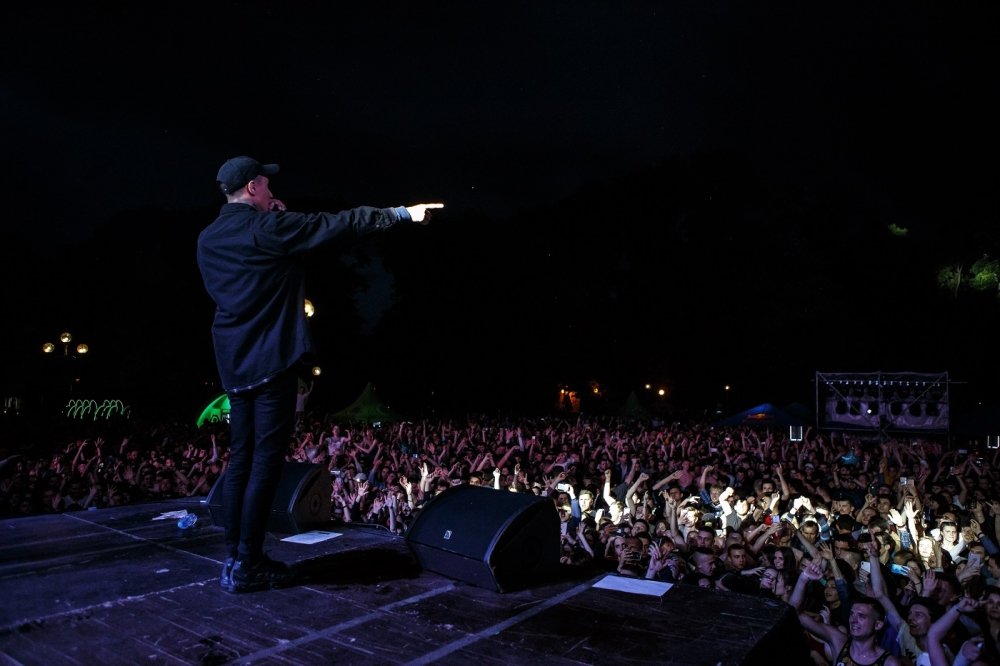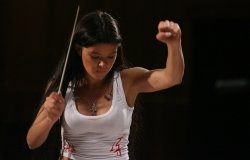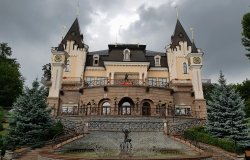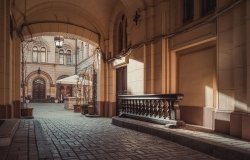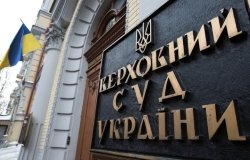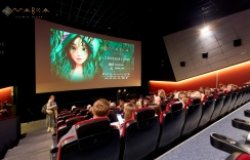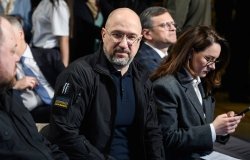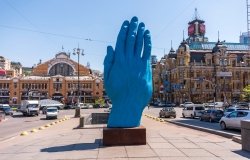
A blog of the Kennan Institute
“What’s Up with Ukrainian Rap?”
BY BLAIR A. RUBLE
Ukrainian rapper Jockii Druce is a person of this century. Now 22, like the century itself, his entire life has been lived with no memory of the Soviet Union or the first tumultuous decade of Ukrainian independence. Like many young Ukrainians, Ukraine always has just been.
Druce grew up in a Russian-speaking family and community in Dnipro, learning Ukrainian in class. As he approached his teen years, he began rapping with friends after school and on weekends. Discovering an aptitude for the music, he became increasingly serious about rap as a means of expressing his feelings and identity. The more he turned to the music for self-expression, the more he found rapping in Russian unsatisfying. He shifted organically to creating his music in Ukrainian because it empowered him to explore unchartered territories.
Druce already had a following before the Russian invasion this year. Because he is from an eastern Ukrainian city close to the fighting that began in 2014, Druce could not ignore a growing partition between his Ukrainian friends and fans and the Russian-language culture dominating the airways. But Russian culture and language increasingly felt impervious and unchanging while Ukrainian culture and language felt fluid and experimental.
When the Russians invaded in February, he released a new video on TikTok, “So What’s Up Brothers?” ironically referring to Russian propaganda about Russians and Ukrainians being brethren. Full of biting humor and sharp satire, the song racked up millions of plays and has become a favored soundtrack for videos about the war being posted on social media. Its closing line repeating the popular slogan, “Russian warship, go #%&@ yourself,” speaks to thousands of Ukrainians of his generation.
Rap and hip-hop emerged from the 1960s and 1970s interaction of Afro-American, Afro-Caribbean, and Afro-Latino street cultures in New York City’s poorest borough, the Bronx. Its path to global dominance—by all accounts rap is the largest selling musical category in the world—revealed a capacity to give voice to the most local of discontent, from the slums of Rio de Janeiro to the townships of Johannesburg, in a form that was universal. Hip-hop’s power lies in part from a total cultural expression, embracing music, graffiti art, fashion, poetry, and dance. Ukrainian hip-hop naturally provided the soundtrack to the 2004–2005 Orange Revolution, and it scores the lives of 21st century Ukrainian youth like Druce.
Druce is hardly alone in turning to music to express the emotions prompted by the war and its brutality. Countless musicians have done so, as discussed in this blog series; see, for example, the post “Uzhgorod Songs” from June 10. Ukraine’s young people are sharing and singing dozens of songs about the war and its perpetrators, such as Sasha Chemerov’s “Wake Up!” Khristina Soloviy’s “I Am Your Weapon,” Zhadan and Dogs’ “Children,” and Karta Svitu’s “Wings.”
The Ukrainian rap scene, like so much cultural expression, was heavily influenced once by Russian musicians. Over time, Ukrainian rappers such as Druce turned away as they realized it was a music that did not speak to who they are. Their music allowed young Ukrainians to define themselves for themselves. This evolution began well before the current war, as evident in Druce’s own musical development.
The Russian invasion accelerated this breach. Horrified by Russian cruelty, Ukrainians are turning to their own language and music to express their anger. Russian culture has little to say to young Ukrainians whose lives have been upended by Russian troops. Ukrainians such as Druce think it pointless to try to change minds molded by Russian war propaganda.
Russian politicians, cultural figures, and media personalities have begun to complain about a “cancel culture” aimed at the glories of their culture. For Druce and tens of thousands of Ukrainians of his generation, they have neither “cancelled” Russian culture, nor left it behind. Rather, in their arrogant obtuseness, these Russians have turned their backs on a vibrant Ukrainian culture being built by artists and their fans who have no memory of ever having been part of a "Russian world." So, what's up, brothers, indeed.
The opinions expressed in this article are those solely of the author and do not reflect the views of the Kennan Institute.
See our newest content first.
Subscribe to receive the latest analysis from Focus Ukraine.
About the Author

Blair A. Ruble
Former Wilson Center Vice President for Programs (2014-2017); Director of the Comparative Urban Studies Program/Urban Sustainability Laboratory (1992-2017); Director of the Kennan Institute for Advanced Russian Studies (1989-2012) and Director of the Program on Global Sustainability and Resilience (2012-2014)

Kennan Institute
The Kennan Institute is the premier US center for advanced research on Eurasia and the oldest and largest regional program at the Woodrow Wilson International Center for Scholars. The Kennan Institute is committed to improving American understanding of Russia, Ukraine, Central Asia, the South Caucasus, and the surrounding region though research and exchange. Read more


